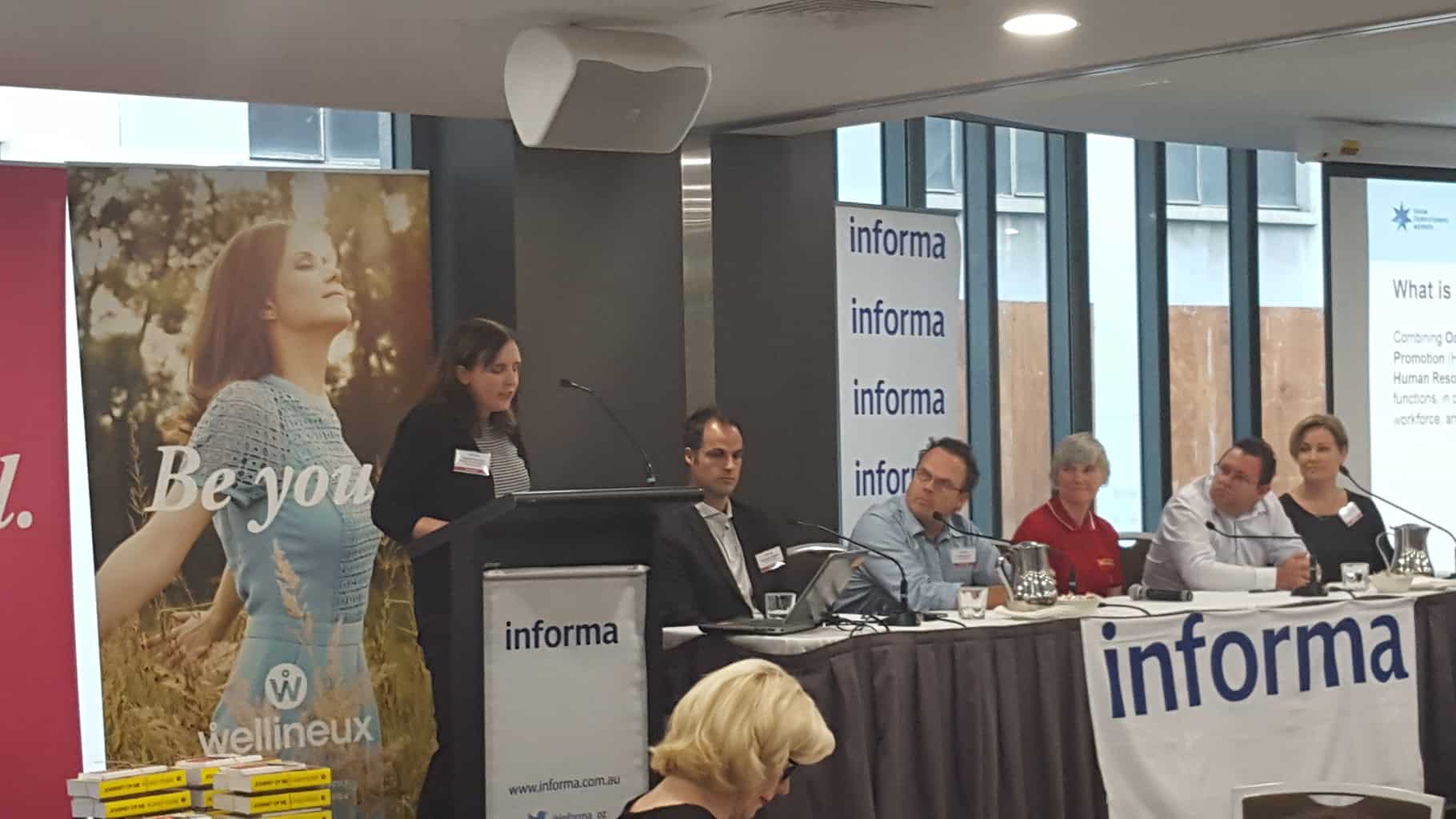 The 2016
The 2016
Already a member? Log in here
 The 2016
The 2016
On 30 March 2016, Melbourne hosted a Workplace Wellness conference organised by Informa. (SafetyAtWorkBlog attended as a guest.) The reason for attending was to see how occupational health and safety (OHS) is growing, or needs to grow, to accommodate workplace wellness issues and how the wellness sector looks on OHS. Continue reading “Gender, buzzwords and safety/wellness knowledge”
 The Health and Safety Representatives’ Conference, organised by the Victorian Trades Hall Council as part of Victoria’s WorkSafe Week, was notable for the lack of politics. Previous conferences have often focussed on political campaigns such as Your Rights At Work but this was largely absent from the presentations. There were some political questions from the floor but that was expected.
The Health and Safety Representatives’ Conference, organised by the Victorian Trades Hall Council as part of Victoria’s WorkSafe Week, was notable for the lack of politics. Previous conferences have often focussed on political campaigns such as Your Rights At Work but this was largely absent from the presentations. There were some political questions from the floor but that was expected.
The conference had some particular highlights relevant to the broader Occupational Health and Safety (OHS) profession.
All conference delegates want to hear cutting-edge, radical or step-change solutions or strategies but what happens when the conference speakers are reinforcing what you already know? That is the situation facing the delegates of the Safety Institute of Australia’s (SIA) National Convention.
On the first day of the conference, local and international speakers have suggested the delegates, almost all occupational health and safety (OHS) professionals, do what they are already doing – talk about safety, build relationships, report on the positives and the lead indicators. Continue reading “The rebuilding of OHS conferences”
Recently there have been several local Australian kerfuffles about freelance writing. I have experienced similar issues and many readers I meet ask me this question – “do you make money from the SafetyAtWorkBlog?”
The short answer is “No”. But this is too simple. Readers do not pay me for access and there is no advertising on the blog. However, what the SafetyAtWorkBlog has done has increased my professional profile in the Australian occupational health and safety (OHS) sector so that my consulting and writing has a higher value.
Last week a content provider contacted me to discuss me writing articles for them. They read my blog articles and liked what they saw. They offered a “word rate” of A$0.40 – a word rate is a rate that, for instance, would offer A$200.00 for a 500 word article. Such a word rate may have been legitimately offered twenty years ago but small business costs have increased enormously since then. Continue reading “Do you make any money from this blog?”
The current International Ergonomics Congress in Melbourne seems to be successful in a number of ways:
Where it seemed to be less successful was in its profile outside of the ergonomics profession. The information available, some identified on other blog articles, has relevance well beyond ergonomics and it is disappointing that the conference was not marketed more to the general occupational health and safety (OHS) profession. (It should have been possible to exceed 1000 delegates just from local promotion.) The OHS profession needs livening up and have its body of knowledge expanded to areas that both support and challenge its own principles and processes.
Sedentary Work
A major thread in the Congress was the issue of sedentary work, something discussed by the first day’s keynote speaker, Professor